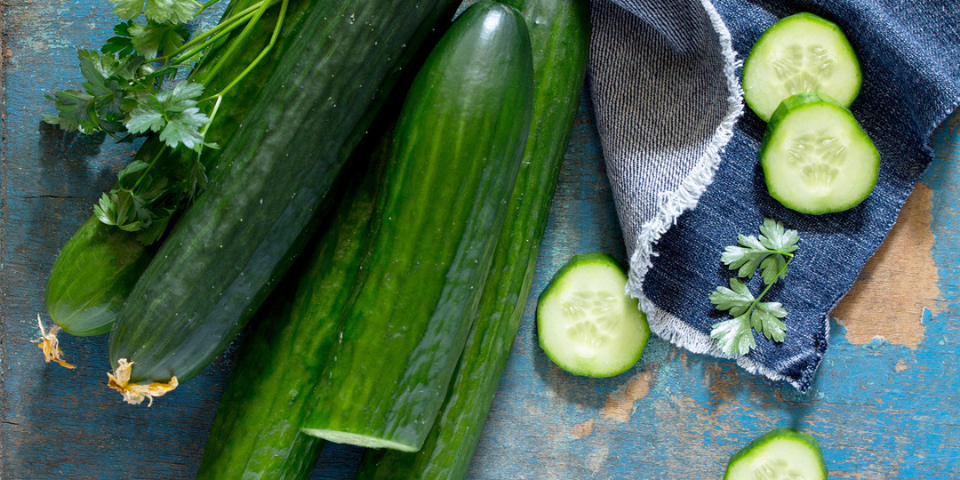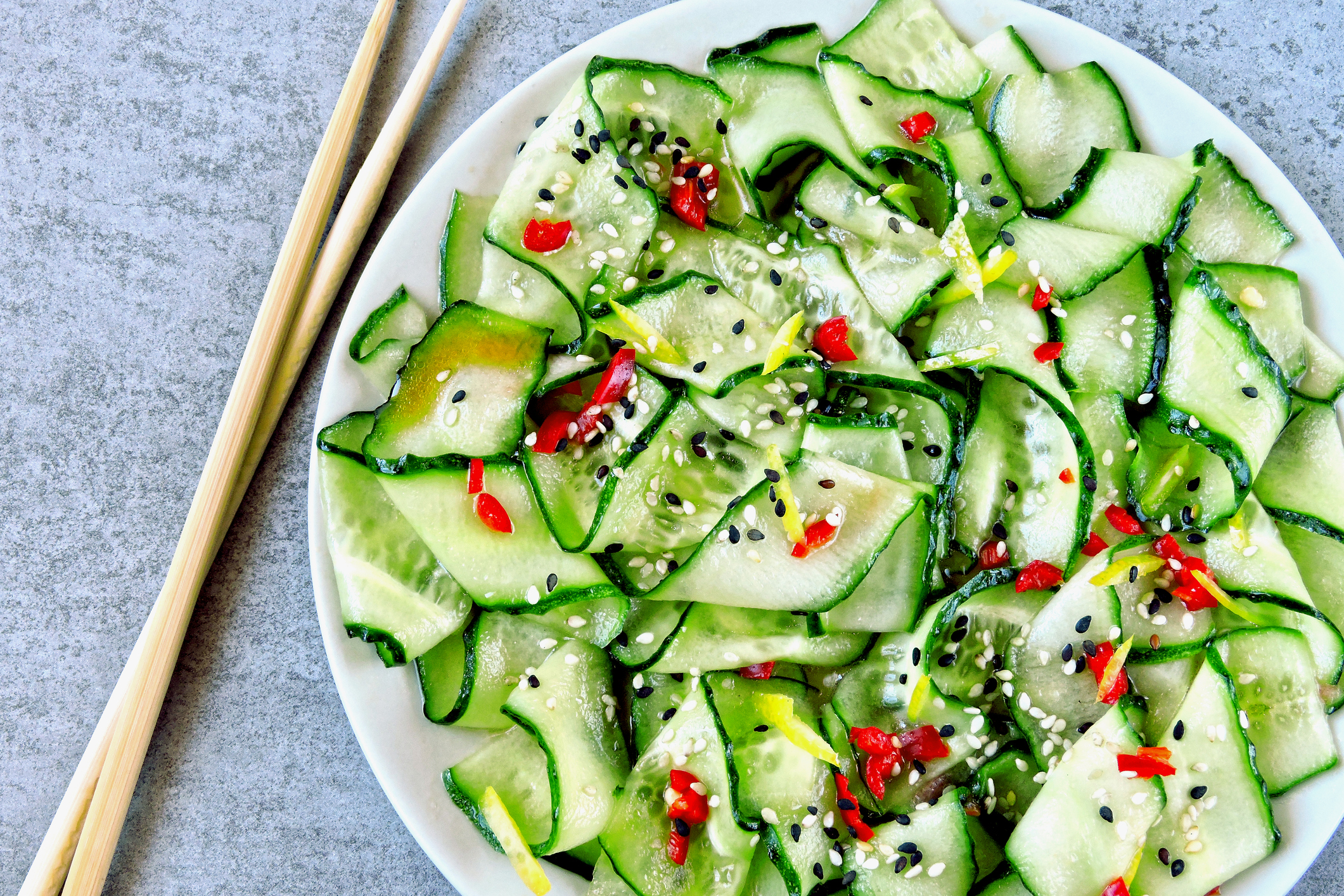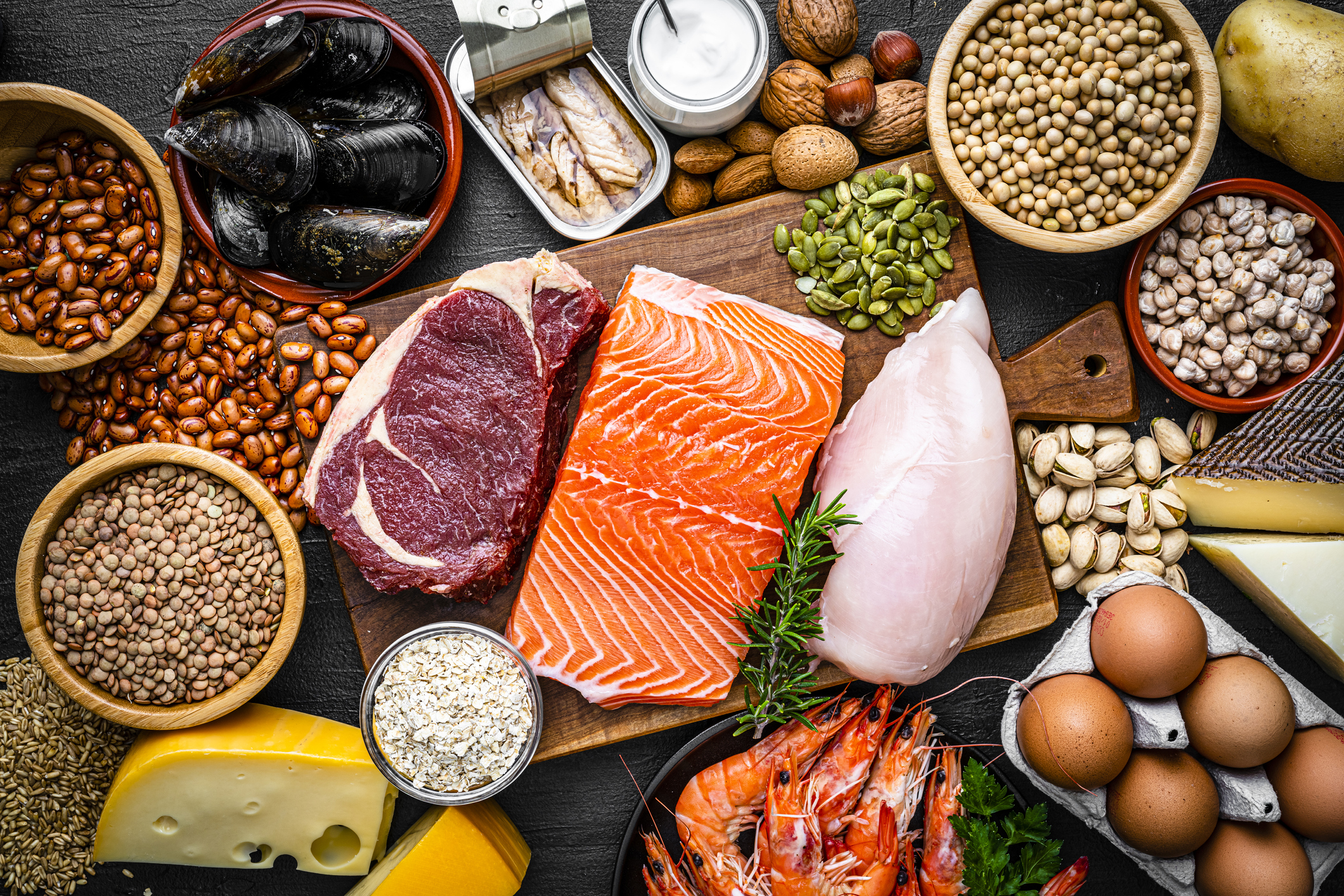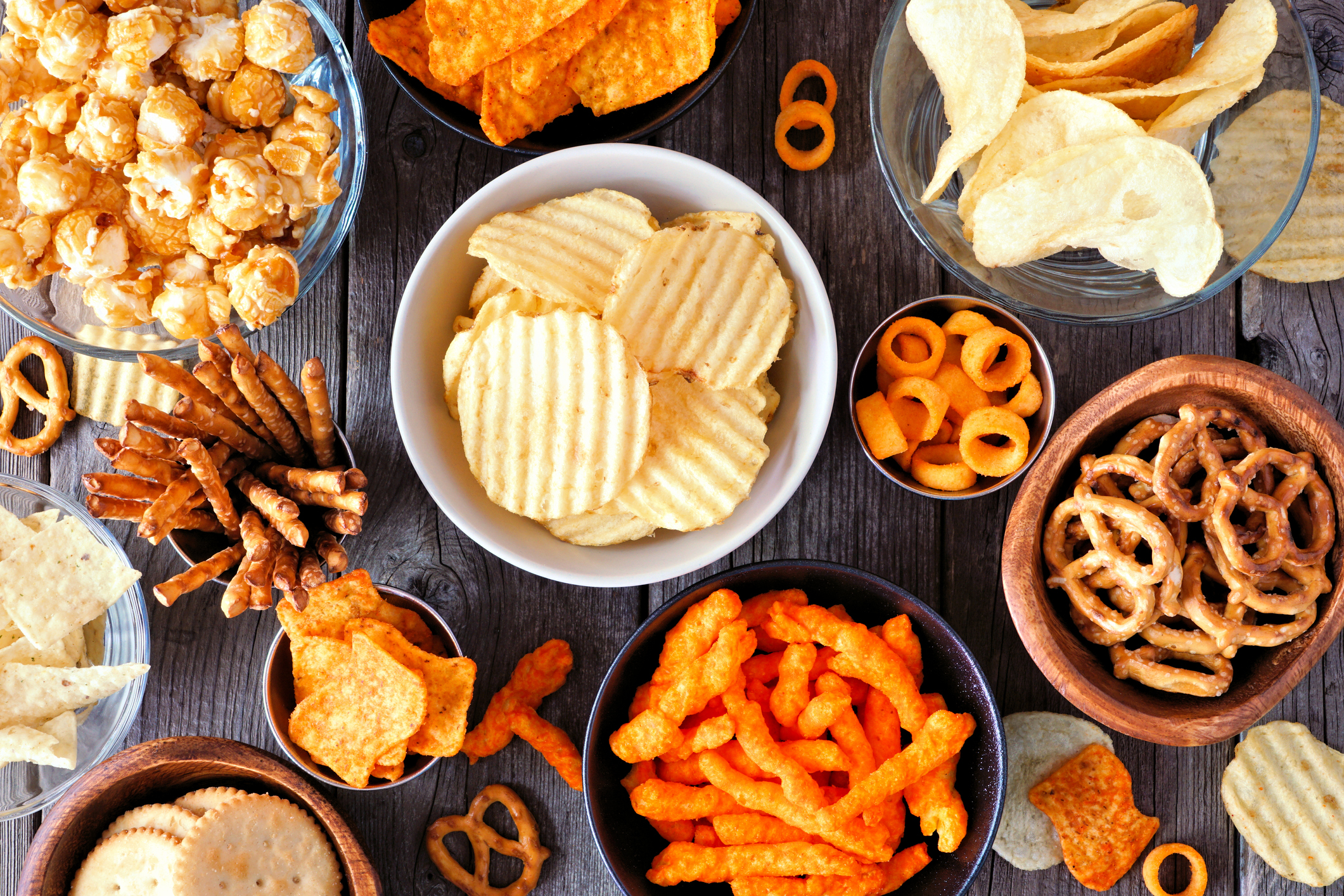We’ve seen countless fad diets that focus on eating one specific food — the cookie diet, the cabbage soup diet, the grapefruit diet. They all claim to help you lose a significant amount of weight very quickly, and the cucumber diet is no different.
The cucumber diet is a quick-fix weight-loss diet that is said to help people shed pounds quickly by eating — you guessed it — a whole lot of cucumbers. But does it work?
Here are the rules, the benefits, and the downsides of the cucumber diet.
What Is the Cucumber Diet?
Cucumbers are naturally low in calories — a whole cucumber has just 45 calories — so it’s no surprise they’d end up at the center of a fad diet.
While there are different variations of the cucumber diet, there’s one common thread: You eat a lot of cucumbers. We’re talking cucumber shakes, salads, sticks, and slices.
What Are the Rules of the Cucumber Diet?
The specific rules of the cucumber diet can vary depending on which source you reference. While there’s a book aptly titled The Cucumber Diet: The Power of Conscious Eating, you can find several variations of the diet online.
The main guideline of the diet is this: Eat cucumbers when you’re hungry, along with a handful of other “approved” foods. Because cucumbers are so low in calories, the idea is that you’ll likely create a calorie deficit by noshing on mostly cucumbers.
What Foods Can You Eat on the Cucumber Diet?
Needless to say, you can eat cucumbers. Most diets have no limitation on how you eat them and how much you consume, although some stricter versions of the diet do limit the amount of cucumber you can have.
A few other foods are typically incorporated, including:
- lean proteins like fish, chicken, and eggs
- Greek yogurt
- cottage cheese
- olive oil
- brown rice
- low-calorie vegetables like spinach, celery, and tomatoes
There’s also one 10- to 14-day protocol that involves eating as much cucumber salad as you want, along with:
- two boiled eggs or 150 grams of tuna without oil or 150 grams of chicken breast
- two big boiled potatoes or three slices of whole-grain bread
- 500 grams of organic fruit
What Foods Can’t You Eat on the Cucumber Diet?
One benefit of the cucumber diet: Aside from whole-grain bread, which is permitted on some versions of the diet, the diet cuts out most processed foods including chips, baked goods, and sweetened drinks.
But if you were to follow the protocol mentioned above, you’d also omit a lot of healthy fare — like fruits and any non-approved veggies.
Can I Lose Weight With the Cucumber Diet?
Yes, but it will most likely be temporary.
You can lose weight on any version of the cucumber diet, because there simply aren’t that many non-cucumber foods you’re allowed to eat — and that means you’ll likely slash your daily calorie intake.
By filling up on mostly cucumber at every meal, which has a high water content, it may be tough to eat enough of the other permitted foods.
“You’re putting so much bulk into your digestive system that you’re not going to have a lot of room for anything else,” says Andrea N. Giancoli, MPH, RD.
But the cucumber diet isn’t designed to be followed for more than two weeks — so it’s not a sustainable diet for long-term weight loss. Any weight you lose on the cucumber diet will likely be gained back once you go back to eating normally.
And there are plenty of other, healthier ways to eat cleaner without cutting out so many food groups.
The Downsides of the Cucumber Diet
You don’t need us to tell you that cucumbers are low in calories and can be a part of a healthy, balanced diet.
“There’s no harm in eating cucumbers with every meal, as long as it’s a moderate amount,” Giancoli says.
But there are a few downsides to making cucumbers your primary food source. Here’s why you should think twice before following the cucumber diet:
1. It’s low in nutrients.
If you eat mostly cucumbers, you’ll miss out on a lot of important micro and macronutrients. Compared to other fruits and vegetables, Giancoli says, “Cucumbers aren’t exactly swimming in vitamins and minerals.”
2. You won’t get the variety you need.
Eating a variety of foods helps ensure you’re getting all the nutrients you need.
“We’re supposed to be eating a wide variety of foods — a variety that gives us a balance of macronutrients, fiber, vitamins, and minerals and all kinds of other things that our bodies need,” Giancoli says.
3. It may slow your metabolism.
Excessive calorie restriction can actually get in the way of your weight-loss goals.
On the cucumber diet, Giancoli says, “It’s going to be very hard to reach your calorie needs — and once you go below your basal metabolic rate with calories, you’re not giving your body the calories it needs just to stay alive at rest.”
That means your metabolism will likely slow down to conserve energy.
What’s more, you probably won’t have the energy to hit the gym, and working out regularly goes hand in hand with healthy weight loss you can maintain.
4. You’ll likely gain the weight back.
As is the case with plenty of other very low-calorie fad diets, you’re probably going to put any lost weight right back on.
With prolonged calorie restriction, the human body can go into starvation mode: “Your body’s like, ‘You’re not giving me what I need; I need to do something about that and use less energy and burn fewer calories,’” Giancoli says.
Once you go off a restrictive diet, research shows that body weight typically returns to or even exceeds what it was originally.
The Final Verdict
So does the cucumber diet work? In the short term, maybe — but it’s not the healthiest approach to weight loss, and it’s definitely not practical or sustainable.
But you can still enjoy cucumbers as part of your healthy eating plan — like in a crudités platter or a Greek salad.




